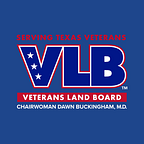Women in the U.S. Military: American Revolution to the Spanish-American War
March is Women’s History Month, but here in Texas it’s also Women Veterans Month, and we celebrate their long and distinguished history serving in the U.S. Military. As early as the American Revolution, women have stood alongside men, behind the scenes and on the front line, with courage and determination
American Revolution
The women who supported the Continental Army were often disparaged as “camp followers,” because they served the soldiers and officers as washerwomen, cooks, and seamstresses, but some even acted as soldiers and spies. Many of these women followed the army because their husbands were soldiers in the regiments.
Margaret Cochran Corbin was married to John Corbin, a trained artilleryman and one of 600 American soldiers defending Fort Washington from 4,000 Hessian troops under British command. Because she was a nurse, Margaret was permitted to join her husband in battle to provide support to injured soldiers. When John Corbin was killed at his cannon, she immediately stepped in and resumed firing the cannon in his place until she herself grievously wounded. On July 6, 1779, the Continental Congress granted her money equal to one-half the pay drawn by a soldier and one suit of clothes. Margaret was the first American woman to receive a military pension and is buried at West Point.
Civil War
Women filled many of the same roles listed above for the Union and Confederate forces. In addition, women nurses and matrons staffed government and regimental hospitals for the Union and Confederacy, and at least one was an acting assistant surgeon who tended to the wounded. Female nurses and spies also worked near the front lines. They also served disguised as male soldiers fighting at the front. Historians have documented roughly 250 female Civil War soldiers, and there were certainly more, who participated in every major battle.
In 1861, after the death of her husband, who was an officer with the Texas United States Army, Loreta Janeta Velázquez enlisted in the Confederate States Army as Henry T. Buford and went on to fight at Bull Run, Ball’s Bluff and Fort Donelson. While in New Orleans, her real gender was detected and she was discharged, however, she reenlisted and fought at the Battle of Shiloh in April, 1862. Afterwards, she was exposed again and became a Confederate spy and later, a double agent for the U.S. Secret Service. While she worked as a spy, Loreta was sometimes disguised as a man and other times as a woman. Loreta was married and widowed three more times, and died in January, 1923.
Spanish-American War
After the Battleship Maine exploded in the Havana Harbor and the Battle of San Juan Hill in Cuba, wounded American soldiers were kept in very unsanitary conditions. Typhoid and Yellow Fever were rampant and there were few experienced medical personnel available. The Army Nurse Corps was comprised of more than 1,500 nurses who were paid thirty dollars a month, but held no military status. They served in post and camp hospitals and on hospital ships from 1898 to 1901.
Dita Hopkins Kinney, a former contract nurse, became the first Superintendent of the Army Nurse Corps in 1901. Esther Voorhees Hasson, one of the relief nurses during the war, became the first Superintendent of the Navy Nurse Corps in 1908. Ellen May Tower, a U.S. Army nurse from Byron, Michigan, died of Typhoid in Puerto Rico during the war. She was the first nurse to die on foreign soil and the first woman to receive a military funeral in Michigan.
If you are a Woman Veteran who would like to share her story, please contact Monica Brown, the Program Coordinator for the VLB Voices of Veterans Oral History Program at monica.brown@glo.texas.gov or call the Texas Veterans Land Board (VLB) at 1–800–252-VETS (8387). If you are a Woman Veteran in Texas looking for assistance with employment, health care, VA pension claims, education or anything else, please contact the Women Veterans Program at the Texas Veterans Commission (TVC).
Stay tuned for the next blog post: Women in the U.S. Military: World War I & II
